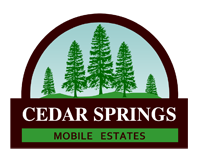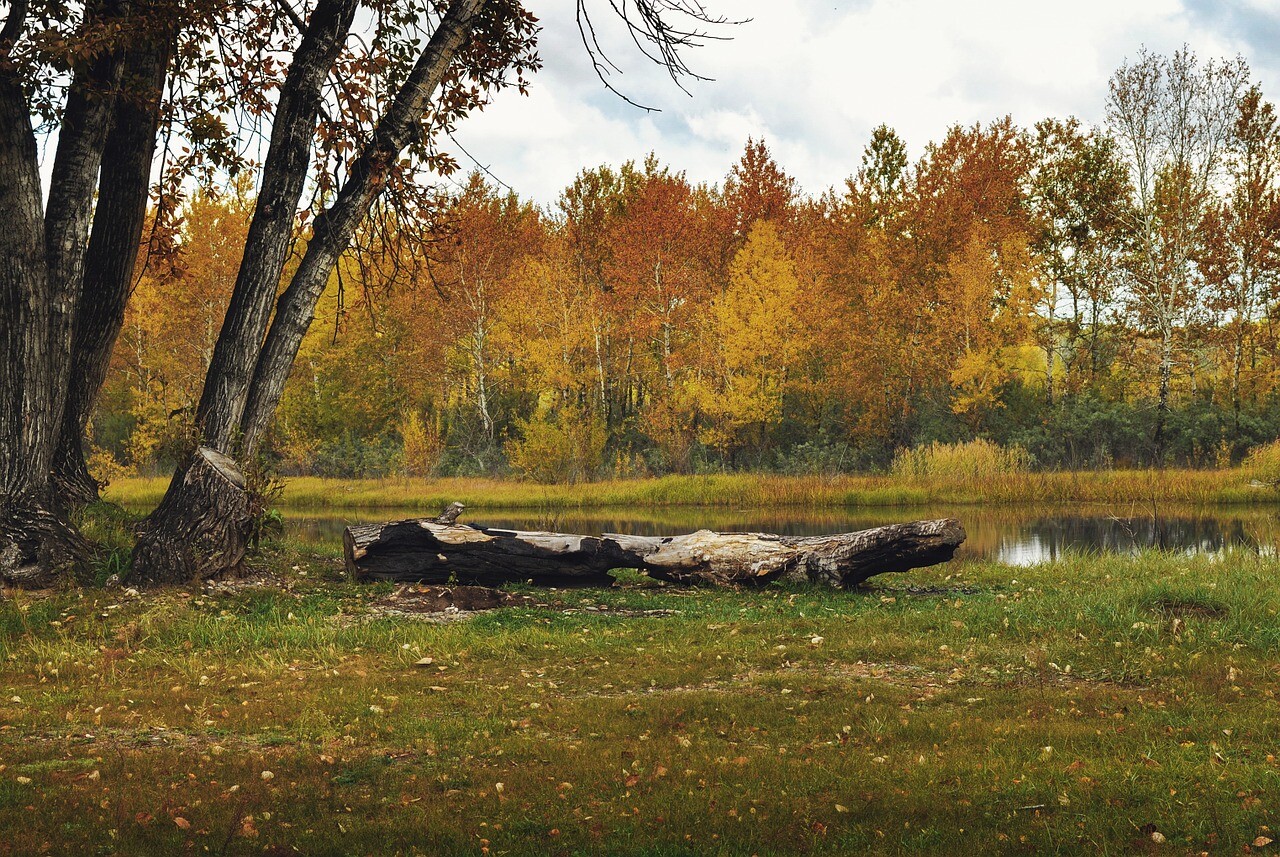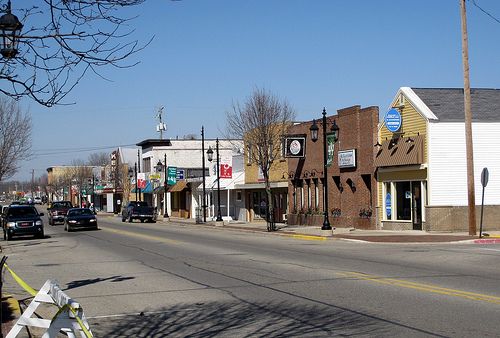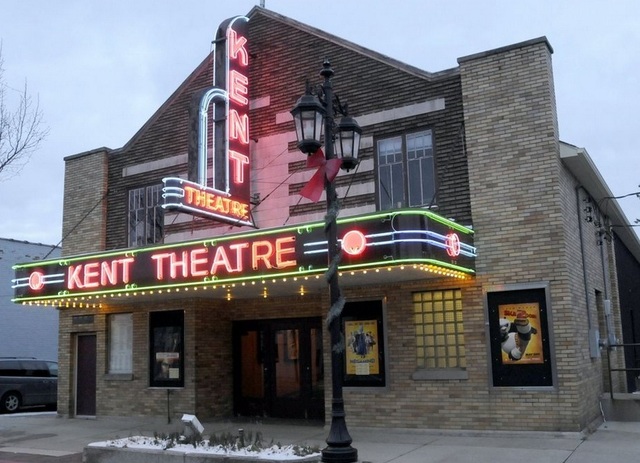4 years ago
·
Justin Becker ·
Comments Off on Prefab Homes Michigan Has to Offer: What You Need to Know
Every time you’re looking for a new dream home in Michigan, you are presented with either the option to build your own or buy. Regardless of the option you go for, your choices are limitless.
Prefab homes are fully developed in a climate-controlled factory before they’re shipped to the site. This translates into reduced costs and accelerated production.
The best prefab homes in Michigan can be as little as 1,000 sq. ft. or be spacious enough to accommodate several people. Different floor styles and floor plans are available for everyone as well.
Here, we highlight everything you need to understand about prefab homes in Michigan.
Prefab Homes: Michigan
Let’s look at everything you should know about prefab homes in Michigan.
What are Prefab Homes?
A prefab home is also known as a modular home, system-built, or factory-built home. These dream home modules are developed in a factory and then transported to the site for assembly. A module is designed with basics such as doors, closets, electrical, and plumbing.
There is a possibility of connecting several modules to form a large modular home.
Benefits
Modular homes come with different benefits that you can explore while seeking a home to purchase or rent in Michigan.
These benefits include:
Affordable
One major benefit of a modular is its price. Even though the cost of modular homes depends mainly on the size, a modular home builder can develop a more affordable home compared to a site-built home builder.
Quick Construction Process
Modular construction takes a shorter period to construct than other home types. For instance, a site-built home could take seven months to one year to complete, while home modules may take merely days.
The modular construction materials are readily available, thus explaining the quicker development process.
Energy-Efficiency
Modulars nowadays employ greener products compared to stick-built homes. Since the design of these homes tends towards energy-efficiency, you’ll come across rainwater systems and solar panels.
Financing
Some manufacturers provide their financing options. This is something you’ll never find with local contractors.
You can even get financing as long as your modular sits on a permanent foundation.
Challenges
Even though modular homes provide several benefits, they also have challenges, especially in Michigan.
Customization
Even though you’ll still find some eco-friendly and exciting designs, modular homes don’t match the quality of site-built homes in Michigan. It becomes difficult to make a modular home a custom home after you have already built the unit.
Transportation
Since modular homes are developed in the factory, transporting them to their final destination adds an added cost. The shipping also limits the size of a modular.
Property Cost
Additional expenses might arise after you purchase a modular, including the land where you’ll place the home. The cost of land could be equal to the cost of your modular, based on where you decide to settle.
Resale Value
Most modular homes don’t sell as quickly as site-built homes. This can be mainly attributed to the style with which modular homes are built.
However, there are new home construction techniques that are likely to improve their resale value.
Best Modular Home Builders
If you’re seeking the dream home for your family, several reputable modular builders and dealers are willing to ship it to you within the shortest time possible.
Finding a reputable home builder requires thorough research. Below are some builders to consider:
Clever Homes
Clever Homes has been in operation for about 20 years. They’re unique developers since they specialize in developing modular homes of different styles and floor plans.
The company employs panelized and modular building techniques in its construction projects. For instance, it can easily develop a multi-module modular home, with a two-car garage and decks, or design a net-zero energy modular home.
Whether you’re looking for an 8,500 sq. ft. home or a smaller unit, Clever Homes is there to fulfill your needs. The company starts the job by doing a feasibility analysis that incorporates the costs and permits.
A dream home from Clever Homes goes for between $400-$500 per sq. ft. The company ships its modular homes to any state in the United States.
Pacific Modern Homes
Pacific Modern Homes offers some of the best quality prefab homes in the industry.
The modular homes are broken down based on style and size. They have everything from granny flats and single-story homes to 3,500 sq. ft. homes, and the company has about 25 single-story floor plans.
All modular homes here are designed from scratch using high-quality building and construction systems. A single-story unit of about 600 sq. ft. costs $27,000, while a six-bedroom unit with a garage could be as high as $173,500.
The finish price is about 25-30% of the total construction costs. You should, therefore, keep the permits, land, and finishing costs in mind.
Allwood
If you’re seeking a small prefabricated custom home that can comfortably fit in your backyard, Allwood Outlet has everything you need.
Most of the modular homes here are designed with sizes of under 1,000 sq. ft., and you’ll come across at least 30 different floor plans to choose from.
Their affordable prefab homes ship for free throughout the contiguous 48 states, and they can provide you with financing through Lightstream. Prices range from $3,600 to over $50,000, depending on the style and sq. ft.
Custom Container Living
This home builder designs homes that come in two sizes, which include 8’ x 40’ and 8’ x 20’. The company also boasts about 30 different styled floor plans.
What’s inside varies with the floor plans. It would, therefore, help to check the floor plans before you get excited about the prices.
Prefab homes from Custom Container Living cost between $25,000 to $100,000.
Why Prefab Homes in Michigan?
The real estate industry in Michigan has been transforming, for the better, over the last ten years. Nowadays, it’s easier to access quality modular homes here than in any other part of the country.
Below are reasons why modular homes are better in Michigan:
Affordability
Michigan boasts some of the most affordable modular homes for sale, whether it’s modular or mobile homes for sale. For instance, you can get a high-quality modular home for as low as $5,000.
The cost of renting a prefabricated home is between $650 to $900 monthly, on average. With this amount, you can easily access quality floor plans of 2,000 sq. ft., or more.
Stellar Floor Plans
One benefit of purchasing a modular home in Michigan is that you’re in control of everything. You can even customize your home to meet your needs and desires.
Modular homes in Michigan can feature stone fireplaces, upgraded countertops, upgraded flooring, and spacious bathrooms. The floor plans are well designed so that you’ll forget you’re renting a unit.
Fantastic Community Amenities
If you buy or rent a prefab home in Michigan, you should be ready to access some of the most exciting community amenities. Most of the modular home communities are set in the middle of a serene setting.
You’ll also have youth playgrounds and basketball courts in most communities. You should expect additional outdoor recreation activities as well.
Most modular homes provide an opportunity for you to engage in camping, fishing, and hiking. You’re also allowed to keep pets, as long as you comply with pet policies.
Read more
5 years ago
·
Justin Becker ·
Comments Off on Cedar Springs, MI History: Everything You Need to Know
Cedar Springs is a city that lies in Kent County, in the state of Michigan, 20 miles north of Grand Rapids.
Known as the “Red Flannel Town,” the city is home to an annual Red Flannel Festival, celebrating the famous “drop-seat” long johns and nightwear.
According to the 2010 census, Cedar Springs, MI has a population of 3,509, with a total area of 2.10 square miles, of which 2.03 square miles of it is land and 0.07 square miles is water.
Cedar Springs, MI History
Established as a lumber town in 1856, Cedar Springs boasted numerous lumber and shingle mills.
Apart from the town being the northern terminus of the Grand Rapids and Indiana Railroad for two years, it also served as the crossing point for the east-west Toledo, Saginaw, and Muskegon (Grand Trunk) Railroad.
In 1871 the Michigan legislature incorporated Cedar Springs as a village. At the time, it was a major hub for timber history.
In October, 1959, the Village became the city of Cedar Springs.
One reason that stimulated the Village as a city was developing a water distribution system and sanitary sewers unrelated to Nelson and Solon Township. Their borders ran through the Village while deriving tax revenue from property owners within the Village.
Why is it Known as Red Flannel Town?
Due to the logging activity, a new enterprise emerged in Cedar Springs.
Red Flannel undergarments were produced for the loggers whose work required them to be outside throughout the harsh winters.
That business continued beyond the lumber industry era and still exists today as a viable part of the community.
First Settlers
John and Lydia (Proper) Smith are believed to be the first settlers in Cedar Springs, Kent Co., Michigan.
The research has shown that Mr. and Mrs. Smith came to Cedar Springs in 1851, where they opened a sawmill for a time and kept the post office in the sawmill in Nelson Twp. In 1852 they bought 700 acres in Solon Township..
According to the History of Grand Rapids and Kent Co, in 1918, Mr. and Mrs. Smith experienced all the privations of pioneer life.
In 1852 the nearest settlement was Laphamville (now known as Rockford), about seven miles to the south.
The road to Cedar Springs was an old Native American trail that had barely become a path wide enough for wagons to travel over.
The Smiths settled on Cedar Creek at the north end of what is now the town of Cedar Springs. The area was covered with beautiful old cedar trees, and the flowing spring was a great convenience next to their home.
The Smiths listed themselves as farmers in the 1860 census, but they also were Innkeepers.
The History of Grand Rapids and Kent Co. 1918 says that their home was a log cabin in the forest and was the pioneer’s hotel, being liberally patronized for a long time.
Cedar Springs Historical Museum
Cedar Springs Historical Museum allows one to step back in time to tour the one-room Payne School House that was moved in 1971. It is located in Morley Park, just off South Main Street.
After renovation, today, the school reflects the century-long era in public education when one teacher, lodging with a school family, taught all eight grades.
While in the museum, you step back into the history of Cedar Springs. Displays include an early pioneer home, Native American exhibits, lumbering, railroad, general store, and more.
Interestingly, they also have a genealogical library with many indexed records such as obituaries and funeral records.
The museum itself has much more to offer for anyone curious to dig deeper into the history of Cedar Springs.
For example, the Cedar Springs Museum and Historical Society has microfilmed newspapers covering over 100 years of the Cedar Springs Clipper, which go from 1869 to the 1980s.
In addition to the many displays, the museum offers the following services:
- Genealogy assistance
- Census information for research
- Research is done for you – fees available by contacting the museum
- Microfilm access
- Yearbooks from Cedar Springs Schools
- Composite pictures of classes in early school years
- Rental of the Payne Schoolhouse for elementary classes (Class materials available to teachers for use here)
- Maps and Plat books from (1800s-1900s)
- The history of Cedar Springs
Note: If you plan to visit the museum in Morley Park, just off South Main Street, their opening hours are as follows;
- WEDNESDAYS: 10:00am–5:00pm
Ideally, you should contact the office for more information about your visit and any other questions that you need answers to.
The Cedar Springs Community
The community was named for the fine springs bordered by a cedar grove.
According to the 2010 census, Cedar Springs has 1,115 households and 774 families living in the city.
With Cedar Springs being less than a mile from US-131, the community provides easy access to the cultural amenities of the greater Grand Rapids area.
The city is a beautiful community with tree-lined streets and a varied housing base. Taxes in the city have remained steady with the city millage rate being 15.0642.
The city has a small retail business district and a stable industrial base when it comes to the economic perspective.
The community has vast possibilities for future growth. Significant industry and business have been attracted to the city area, including Display Pack and various precision tool and die companies.
The Present Cedar Springs
With a 2020 population of 3,753, it is the 484th largest city in Michigan.
The current population of Cedar Springs is growing at a rate of 0.56% annually and its population has increased by 6.95% since the most recent census, which recorded a population of 3,509 in 2010.
Today, the city has a population density of 1,913 people per square mile.
When it comes to income, the average household income in Cedar Springs is $57,053, with a poverty rate of 21.34%.
In recent years, the median rental costs have come to $800 per month, and the median house value is $119,200.
The median age in Cedar Springs is 34.3 years, 33.8 years for males and 34.6 years for females.
Cedar Springs Demographics
According to the most recent American Community Survey (ACS), the racial composition of Cedar Springs is:
- White: 92.58%
- Two or more races: 3.74%
- Black or African American: 2.59%
- Other race: 0.85%
- Asian: 0.25%
- Native American: 0.00%
- Native Hawaiian or Pacific Islander: 0.00%
Is Cedar Springs a Good Place to Live?
In a nutshell, Cedar Springs is a great place to live and work.
There’s much more to the city than the name itself. Whether it’s a historical building, recreational places, or parks, rest assured you’ll find something for yourself.
With the cost of living almost seven percent less than the national average, you can live a quality life without breaking the bank.
It is important to remember that the cost of living in any area can vary based on factors such as your career, your average salary, and the real estate market.
If you’re looking to move to the city, make sure you do adequate research on the housing market, among other factors, before making any decision.
Final Thought
Cedar Springs is rich in history, growing from a village (Lumber Town) known for lumber and shingle mills back in 1871, to being a city in 1959.
There’s a lot to see and discover in Cedar Springs. Visiting the city will open the doors to answers of any questions you have about the city.
For example, the Cedar Springs Historical Museum (located in Morley Park, just off South Main Street) displays exhibits of Native Americans, lumbering, railroad, and more.
Read more
5 years ago
·
Justin Becker ·
Comments Off on Cedar Springs, Michigan: Must See Places
Cedar Springs, Michigan is a small town of around 3,500 people, located just 20 minutes north of Grand Rapids.
The town is home to a small retail business district and industrial base, and it was named for the nearby fine springs bordered by a Cedar grove of trees.
Residents of Cedar Springs are connected to the greater Grand Rapids area via US-131. Cedar Springs has the charm of a very small town, all while offering big city amenities.
Cedar Springs, Michigan
There is a rich history in Cedar Springs to be celebrated.
In this article we give you seven places or events that you must see/experience while visiting the wondrous town of Cedar Springs, Michigan:
● Cedar Springs Museum
● Trestle Park
● Red Flannel Festival
● Deer Track Junction
● Cedar Springs Brewing Company
● Long Lake Park
● Kent Theatre
Cedar Springs Museum
Tour local history at the Cedar Springs Museum.
You will be able to see an old general store, railroad displays, an old stump puller and the one-room Payne School.
The Payne School was moved to Morley Park in 1971 and has been renovated to show visitors the era of public education when one teacher taught all grades.
The school contains desks, a teacher’s stick, an American flag, a pot belly stove, and the recitation bench.
Free tours are available and groups can rent the school for educational purposes too.
Other displays inside the museum are focused on Native American history, lumbering, farming and more.
Cedar Springs was originally established as a lumber town. There were many lumber and shingle mills throughout the town, and it was also a crossing point for several railroad lines.
Finally, the museum is home to a genealogy catalog that can be accessed for free.
Trestle Park
Located just 10 minutes south of Cedar Springs, and under 20 minutes from Grand Rapids, is Trestle Park.
This park was established in 2012 to commemorate the historical logging days.
Centered around an old stone trestle, the park also features an authentic anchor from Houghton Lake, a pavilion, and a play area for kids.
White Pine Trail runs near Trestle Park, and there is a connector trail as well.
White Pine Trail is a 92.6 mile network that runs through Kent County, Mecosta County, Montcalm, Osceola County and Wexford County.
There are concerts at Trestle Park in the summer, too.
Red Flannel Festival
Red Flannel Day has been celebrated in Cedar Springs, MI for over 80 years.
The story goes that a New Yorker was searching for long red flannel underwear during one of the harshest winters of the Great Depression, and Pollock’s Store in downtown Cedar Springs had a large stock. They received many orders for years until the town was named “The Red Flannel Town.”
Residents of Cedar Springs, MI believe the red flannels helped keep their town on the map while many other small towns were being bypassed or fading away.
Each year, people are drawn from not only Cedar Springs and Grand Rapids, but all over the state of Michigan to partake in the grand parade, decorating contest, photo contest and pie eating contest to help celebrate the Red Flannel Festival. There is also a 5k and 10k run/walk.
The Red Flannel Festival includes an arts & crafts fair and plenty of local food. There is even Red Flannel Royalty, where a Queen is named.
Also, kindergarteners in the Cedar Springs school district can compete in the Prince and Princess contest.
Deer Tracks Junction
For a fun family outing, be sure to check out Deer Tracks Junction.
Deer Tracks Junction is only 10 minutes southeast of Cedar Springs and 20 minutes from Grand Rapids.
Get up close and personal with your favorite farm animals, like pigs, goats, donkeys, bunnies, camels and alpacas.
You can feed most of the animals if you purchase the farm’s foods (carrots, pellets or tweet stix). Seasonally, you can also bottle feed baby animals.
Deer and elk of all ages also call the farm home, and there is a fun barn for kids to play. It is full of tunnels, nets and giant slides. There is also a sandbox, a rubber duck racing tank and a four story mine and train play area. There are also dedicated spaces for young children.
If that is not enough for you, Deer Tracks Junction also has homemade ice cream. They make all of the delicious ice cream on the farm, and their menu features classic flavors, along with their own specialties.
Cedar Springs Brewing Company
Cedar Springs Brewing Company was founded in 2013 by David Ringler, who’s title is now Director of Happiness.
Located on Main Street, Cedar Springs Brewing Company is at the heart of this small town.
Cedar Springs Brewery serves traditional Bavarians styles of beer and American craft options. The kitchen also features pub fare and a German Bavarian menu.
The brewery supports its local community through the Community Give Back Program. Residents can apply for support through the online application.
Cedar Springs Brewing Company also hosts a farmer’s market every Thursday during the summer, where vendors set up near the German-inspired brewery to sell locally made goods.
Long Lake Park
About 15 minutes west of Cedar Springs, and 25 minutes south of Grand Rapids, is Long Lake Park.
Michigan is known for its lakes, and Cedar Springs residents can enjoy some lake life at Long Lake. The park is designed well for group events, with several picnic areas and shelters.
Long Lake park is located right on Long Lake itself, with a mile of shoreline. You can enjoy swimming, fishing and non-motorized boating on the lake. There is also a public beach at the park, perfect for summertime, baseball diamonds, room for biking, and more.
Kent Theatre
At the center of Cedar Springs, you will find Kent Theatre. It is over 120 years old and was originally built as the Hubbard Opera House.
Located right on Main Street, this theatre was first used for entertainment and gatherings like dances, chicken suppers, school graduations, political rallies and silent movies.
The theatre closed its doors in 1975, but was reopened by the Cedar Springs Theatre Association in 1998. Volunteers worked to fundraise and make improvements to the historical landmark, and today, the theatre is community-owned and operated.
There are regular films, live theatre and public presentations here. Local organizations can use the theatre as a meeting place or for musical events, and upcoming events are listed on the Kent Theatre website.
Honorable Mention: Classic Kelly’s Family Restaurant
Make Cedar Springs, Michigan Your New Home!
If you are planning to move within or to the state of Michigan, surely you will be looking for a place to live.
Here at our mobile home park in Cedar Springs, MI, Cedar Springs Mobile Estates, we offer a number of mobile homes for rent in Cedar Springs, MI and mobile homes for sale in Cedar Springs, MI.
For more information on our homes for rent and for sale, contact us today.
Read more















